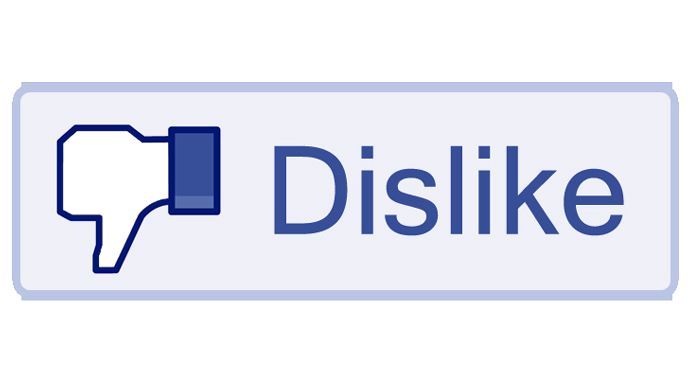Keeping The Data Lake Clean
One of the biggest problems in data analysis is making sure that your inputs are clean and sane. This holds true whatever you are using to do the analysis, whether it’s the latest fancypants machine-learning, or a roomful of expert humans doing the calculations by hand.
I think it’s useful to keep this perspective in mind when considering Apple’s recent tie-up with Salesforce.

The first example given by Salesforce is this scenario:
Imagine a sales rep saying "Hey Siri, Daily Briefing" then hearing an overview of their day.
This scenario encapsulates the dream end-state of all of these integrated CRM systems. Normally, of course, the user requesting an overview is not the sales rep but a manager, whether the person responsible for a region who needs to know whether their team of sales reps is going to hit the regional number, or a higher manager preparing a presentation for the board and hoping very much that the key dashboards are all in the green.
The problem with such dashboards is the age-old one of Garbage In, Garbage Out. The predictions are only as good as the data they are based on. Unfortunately, the data are not always good, because by and large, sales reps – and I’ve known a few, good, bad, and indifferent – do not particularly enjoy documenting everything they do for someone else. That last clause is important; the good sales reps take a lot of notes and know all sorts of details about their accounts and territories, but the notes are for their own consumption, and the way they are taken and stored make them hard to access. Sometimes this is even by design, especially among "relationship" sales people who see their value mainly in terms of the thickness of their Rolodex1: "if you fire me, I’ll walk and take all my customers with me!".

We all know how well that play worked out for Tom Cruise’s character in Jerry Maguire. Regardless, getting the input data is a very real problem. This is why I am much more interested in the second half of that example scenario from Salesforce:
They can also easily update Salesforce records after a meeting.
Updating opportunities is already pretty easy from the Salesforce mobile app, but sales managers and Sales Ops types have a tendency to over-complicate the process by adding supplementary required fields which must be filled in to save the simple text-based notes and contact info which are the most valuable parts of the process. Added friction in the data-entry stage leads to opportunity details being added in a rush at the end of the quarter, ret-conning against the ultimate outcome of the opportunity rather than documenting facts in near real time.
Adding support for other technologies on the input side has the potential to remove much of that friction. Siri would let reps have a good rant in the car on the way back from the meeting and transcribe all of that into the activity record. Location data would enter the correct office where a meeting was held. Integration with office suites and cloud storage could add the collateral used in a meeting to the opportunity. Each addition of intelligence on the input side would remove a small amount of friction from the opportunity management process, which in turn would help to ensure that the data which all the fancy analyses are based on are at least somewhat factual.
I have no doubt that most of the videos and presentations around the Apple-Salesforce joint technology developments will focus on showing magical Minority Report2 dashboards, updating in real time, and smiling managers happy with the results being displayed. However, if any of those whiz-bang dashboards are to have utility in the real world, it will be down to the input capabilities in the individual sales reps’ iPhone and Apple Watch, and the technology’s removal of as many excuses as possible not to update Salesforce records.
-
Yes, Rolodex; that’s how dated this way of thinking is. ↩
-
I think I owe Tom Cruise royalties for this article. How much is 50% of no dollars whatsoever, again? I’m sure he doesn’t mind appearing here for the exposure, though. ↩
How Much Trouble Is Facebook In?
Users (including me) are deleting Facebook, but FB reports no drop in active users. What gives?
It’s not just Bloomberg, either; a survey published in Forbes claims that More Than 1 in 4 Americans Have Deleted Facebook. I’m not American, nor do I play one on TV, but I deleted the FB app from all my devices a while ago. I still have my account, but I went from checking it multiple times per day to glancing at it once every couple of weeks. Informally, I speak to lots of people who have done the same thing.
Once again, what gives?

Counting And Overcounting
There is nothing surprising here: any action is enough for FB to count you as active, so they can claim with a straight face that even someone like me is still "active" for purposes of their statistics – and the rates they can charge advertisers.
Remember when Facebook inflated video viewing stats for two years? Good times, good times. Turned out, they were counting anything over three seconds as if you had viewed the whole thing. The only problem is, it might take you that long to figure out how to dismiss the annoying thing.
Unsurprisingly, advertisers who had been paying through the nose for those video ad placements were not best pleased, especially as the scale of the over-counting became clear:
Ad buying agency Publicis Media was told by Facebook that the earlier counting method likely overestimated average time spent watching videos by between 60% and 80%
On A Mission
Facebook take their mission extremely seriously. Currently it says this:
Give people the power to build community and bring the world closer together.
The old formulation was perhaps clearer:
To give people the power to share and make the world more open and connected.
Either way, the Rohingya in Burma1, to cite just one example, might have preferred if people had not shared libels and built communities around hunting them down and ejecting them from their villages.

Facebook, however, in dogged pursuit of this ideal, builds and maintains so-called shadow profiles, even for users who had the foresight never to sign up for Facebook. These profiles are built up by using various tracking mechanisms that follow users around the Web – famously, the Like button, although supposedly that has now been defanged. One also suspects a certain amount of information sharing between Facebook’s various properties, notably Instagram and WhatsApp.
The AOL Of Our Century
The bottom line is, you’re not getting out of Facebook that easily, if only because of the famous truism of the ad-funded web: "if you’re not paying for it, you’re the product". With Facebook, as with all social media sites, that is true in a very literal sense. What they are selling to their advertisers is exposure to the greatest number of eyeballs, ideally filtered according to certain characteristics. If the pool starts shrinking, their opportunity to make money off advertisers shrinks commensurately. If people start seriously messing with the stats, for instance by using tools like fuzzify.me, such that the filters no longer return groupings of users that are attractive to advertisers, that will also be a problem. Any drop in Daily or Monthly Active Users (DAU and MAU) would be a much more immediate threat, though, and that is why as long as users check Facebook even occasionally, there will never be a serious drop in usage reported – right up until the day the whole thing dies unceremoniously in a corner.
-
I refuse to call it Myanmar. ↩
How Do You Say Apple In Mandarin?
I noticed this aside in a CBInsights piece on the state of AI assistants in China:
Among US big tech, only Apple’s Siri supports Mandarin on the iPhone. The company’s Homepod smart speaker only supports English, and is not available in China.

This sounds very much like my ongoing issue with the lack of Siri support on AppleTV. Siri is available on iOS in many different languages, but for whatever reason, Apple does not capitalise on that capability to deliver Siri functionality on its other devices.
The assumption is that this behaviour is driven by App Store issues:
I have never watched the Godfather films (I know, I know), and with some intercontinental travel coming up, I thought this would be a good time to load them up on my iPad and finally catch up - forty years late, but who’s counting?
Since I no longer have any truck with physical media, my first stop was iTunes. At first I thought they did not have the films, but this turned out to be because I live in Italy, and so they are listed as Il Padrino. Fair enough, except that it’s not just the title card that’s Italian; the only soundtrack available is an Italian dub. It’s not even the original, it’s a re-dub, and the reviews are all one-stars complaining about the new dub.
Of course iTunes has all three Godfather films in the US store, but Apple in their wisdom tie your iTunes account to the country your credit card is registered in. This means I can’t simply download the English-language version from the US store.
However, when it is keeping Apple out of a market the size of China, which its competitors are unable to enter because of their lack of language support, I would suggest that it is high time to figure out a way around this problem.
Here’s hoping…
New Frontiers In Driver Idiocy
I always get very irritated by people in new high-end cars – ones that certainly have Bluetooth, if not CarPlay or Android Auto – using their phones in their hands. What, you can’t spare thirty seconds to set up the hands-free connection once? After that you can keep your phone in your pocket/handbag/briefcase/whatever, and have both hands free for the actual driving! But no, you have to drive one-handed, or with the phone squeezed between your head and shoulder like the Hunchback of Notre Dame, squinting sideways at the road.
Today, however, I saw something that beats that. This person did have her phone connected to hands-free, and I know because everyone in the street could hear her conversation over the cranked-up stereo. However, for whatever unknowable reason, she was still holding the actual phone in her hand.
I was so flabbergasted I missed my chance to take a photograph of the madness.
Now I have real concerns about how this woman lives the rest of her life. Does she put boots on over her shoes? Or try to use knife, fork, and spoon all at the same time?

Shocking News: Water Wet
After extensive research, we can reveal the shocking result:
If you refuse to sell things to people, they won’t pay for them.
Vice versa, if you make things available to sell, many people will buy them.

The UK’s media regulator, OFCOM, have announced that streaming services such as Netflix and Amazon are now more popular than satellite and cable TV, as reported here: Piracy Audiences Are Untapped Pools of Wealth.
A Practical Example
The best recent example of this mechanism in action is with the excellent SF show The Expanse. This was originally on the US SYFY channel, but after three seasons, the show was due to be cancelled.
The cancellation decision by Syfy is said to be linked to the nature of its agreement for the series, which only gives the cable network first-run linear rights in the U.S. That puts an extraordinary amount of emphasis on live, linear viewing, which is inherently challenging for sci-fi/genre series that tend to draw the lion’s share of their audiences from digital/streaming.
Let’s emphasise that point: Syfy was reliant on live, linear viewing, and only in the US. Time-shift it, and it doesn’t count. Outside the US, and it doesn’t count. Downloaders definitely don’t count. Syfy were basically running a race in shackles, and they were only able to get as far as they did on the strength of some pretty outstanding content. As the novelty waned, though, this quality bonus stopped working quite as well.
Once the problem became clear, the logical next step was to ask the streaming services to step in, backed by a massive fan-led campaign to Save The Expanse. The lobbying was ultimately successful, with The Expanse coming to Amazon Prime.
Amazon is of course best placed to tap into that revenue stream from fans of both non-linear TV and The Expanse – not to mention international fans. Just because a show is only broadcast in the US doesn’t mean it doesn’t have a huge international fan base – so why not monetise those non-US viewers? Because they are viewing…
Out In The Provinces
One of the big reasons for non-US-residents to adopt streaming services is to get access to US TV shows, or get access more promptly. In the US, this mechanism may be less apparent, but anywhere outside that content market, it has always been a major annoyance that we get films and TV shows six months later, perhaps with egregious dubbing too – or maybe we don’t get them at all.
The same mechanism operates to a lesser degree elsewhere, as I have written before:
I get much of what the BBC broadcasts through my cable subscription one way or another, whether it’s through the BBC’s own channels, or on other networks like Discovery that license BBC content such as Top Gear. Sky then pays Discovery for that content - so far so good. The problem is that I get that content months late and often with annoying dubs or subtitles that can’t be removed - despite the Sky platform’s pretty good support for multiple audio and subtitle options on broadcast content.
This means that I end up ahem obtaining content through other channels so that I can watch it within a few days of the air date instead of much later, and with the English audio and no subtitles instead of both audio tracks at once, which happens far too often. I used to do this for Top Gear all the time, and recently I did it for Jonathan Strange & Mr Norrell. I would gladly have paid for both of these, but I could not find a way to do it. While JS&MN is now in the iTunes store, it’s only in the UK and US iTunes stores. I am restricted to the Italian iTunes store, because Apple in their wisdom force you to use the store in the same country as your credit card’s billing address.
The result? Instead of paying the BBC directly, or paying the BBC via Apple, I pirated the content - because that was not only free and very easy, it was literally the only way I could get it.
The only thing that has changed since I wrote that piece is that I no longer have cable TV. Instead, I have subscriptions to both Netflix and Amazon Prime, which cover almost all of my family’s requirements – except, still, for the BBC. I probably would cough up a reasonable amount for an iPlayer subscription, as there is a lot of quality content on there, but this is not even an option to me outside the UK.
Eventually these geographic restrictions must fall – but until then, people will find a way to get content, which means content producers and distributors are leaving money on the table. The first to embrace this new reality will see the greatest returns. The last? Nobody will hear about them any more.
Photo by Sven Scheuermeier on Unsplash
Let’s Shed Some Light on This
Do you know what would be really great, when I fly in from a time zone quite a few hours misaligned with the local one? It would be fantastic if you all did not immediately lock me in a room without any windows for several hours. I mean, that’s bad enough for people who have to work there all the time, but it’s murder for those of us whose home timezone is many hours adrift from local time.
Meeting rooms with actual daylight would be a great help to the much-abused circadian rhythms of overseas visitors. That way we can avoid coming down with a bad case of SAD.

Meanwhile, I will continue to self-medicate with my own cocktail of melatonin and gin&tonic. Cheers!
The Road To Augmented Intelligence

A company called Babylon has been in the news, claiming that its chatbot can pass a standard medical exam with higher scores than most human candidates. Naturally, the medical profession is not overjoyed with this result:
No app or algorithm will be able to do what a GP does.
On the surface, this looks like just the latest front in the ongoing replacement of human professionals with automation. It has been pointed out that supporters of the automation of blue-collar jobs become hypocritically defensive when it looks like their own white-collar jobs may be next in the firing line, and this reaction from the RCGP seems to be par for that course.
For what it’s worth, I don’t think that is what is going on here. As I have written before, automation takes over tasks, not jobs. That earlier wave of automation of blue-collar jobs was enabled by the fact that the jobs in question had already been refined down to single tasks on an assembly line. It was this subdivision which made it practical for machinery to take over those discrete tasks.
Most white-collar jobs are not so neatly subdivided, consisting of many different tasks. Automating away one task should, all things being equal, help people focus on other parts of the job. GPs – General Practitioners – by definition have jobs that encompass many tasks, and requiring significant human empathy. While I do therefore agree with the RCGP that there is no immediate danger to GP’s jobs, that is not to say there is no impact to jobs from automation; I’d hate to be a travel agent right now, for instance.
Here is a different example, still in the medical field: a neural network is apparently able to identify early signs of tumours in X-ray images. So does that mean there is no role for doctors here either? Well, no; spotting the tumour is just one task for oncologists, and should this technology live up to its promise (as yet unproven), it would become one more tool that doctors could use, removing the bottleneck of reliance on a few overworked X-ray technicians.
Augmenting Human Capabilities
These situations, where some tasks are automated within the context of a wider-scoped job, can be defined as augmented intelligence: AI and machine-learning enabling new capabilities for people, not replacing them.
Augmented intelligence is not a get-out-of-jail-free card, though. There are still impacts from automation, and not just to the X-ray technicians whose jobs might be endangered. Azeem Azhar writes in his essential Exponential View newsletter about a different sort of impact from automation, citing that RGCP piece I linked to earlier:
Babylon’s services were more likely to appeal to the young, healthy, educated and technology-savvy, allowing Babylon to cherry pick low-cost patients, leaving the traditional GPs with more complex, older patients. This is a real concern, if only because older patients often have multiple co-morbidities and are vulnerable in many ways other than their physical health. The nature of health funding in the UK depends, in some ways, on pooling patients of different risks. In other words, that unequal access to technology ends up benefiting the young (and generally more healthy) at the cost of those who aren’t well served by the technology in its present state.
Exponential View has repeatedly flagged the risks of unequal access to technology because these technologies are, whatever you think of them, literally the interface to the resources we need to live in the societies of today and tomorrow.
My rose-tinted view of the future is that making one type of patient cheaper to care for frees up more resources to devote to caring for other patients. On the other hand, I am sure some Pharma Bro 2.0 is even now writing up a business plan for something even worse than Theranos, powered by algorithms and possibly – why not? – some blockchain for good measure.1
Ethical concerns are just some of the many reasons I don’t work in healthcare. As a general rule, IT comes with far fewer moral dilemmas. In IT, in fact, we are actively encouraged to cull the weak and the sick, and indeed to do so on a purely algorithmic basis.
It is, however, extremely important that we don’t forget which domain we are operating in. An error in a medical diagnosis, whether false-positive or false-negative, can have devastating consequences, as can any system which relies on (claims of) infallible technology, such as autonomous vehicles.
A human in the loop can help correct these imbalances, such as when a GP is able to, firstly, interpret the response of the algorithm analysing X-ray images, and secondly, break the news to a patient in a compassionate way. For this type of augmentation to work, though, the process must also be designed correctly. It is not sufficient to have a human sitting in the driver’s seat and expected to take control at any time and with only seconds’ notice. Systems and processes must be designed in such a way as to take advantage of the capabilities of both participants – humans and machines.

Maybe this is something the machines can also help us with? The image above shows a component as designed by human engineers on the left, side-by-side with versions of the same component designed by neural networks.
What might our companies’ org charts look like if they were subjected to the same process? What about our economies and governments? It would be fascinating for people to use these new technologies to find out.
Photo from EVG Photos via Pexels
-
One assumes that any would-be emulator of Martin Shkreli has at least learned not to disrespect the Wu-Tang Clan. ↩
Unintended Consequences
One of the unintended consequences of the GDPR is that some US websites have decided that the easiest way to comply is simply to ban all European IP addresses. Now, IANAL, nor do I even play one on the Internet, but my understanding is that this does not shield them from liability, should a European citizen browse one of these sites while travelling in the US.
Regardless of the legal niceties, these restrictions get annoying when I want to browse one of these sites. Most of the time, the correct response to a site that does not want my business is to take said business elsewhere, but it does happen on occasion – and possibly by accident – that something interesting is published on one of these sites. For instance, Mike Godwin, of the eponymous Law, wrote a piece in the LA Times, clarifying how Godwin’s Law should be applied in our day and age.
The LA Times is owned by the company until recently known as Tronc, all of whose web sites block European browsers. Yeah, their policy is about as silly as their name. Normally I can ignore their entire stable of papers without missing anything, but on this instance I did actually want to read the article.

My solution involves the TunnelBear, a VPN service with a cute bear theme and, more importantly for my purposes, a useful free tier. 500 MB per month is a perfectly usable amount for the sort of usage I have, which is mostly text and the very occasional YouTube video which is inexplicably "unavailable in your country".
If you’re interested, check out the TunnelBear here. By using that link, we both get free data – pretty cool!
Why Sales People Will Always Be With Us
I was looking for something else in my drafts folder, and I found this older thing: Sales People: Do We No Longer Need Them?:
We all know that the internet, in particular, has made us – the customers - more savvy and more able to easily see when we're being "sold." Instead, many now believe traditional sales people should go the way of the dodo bird, and companies should offer something else — experience and customer service.
I think there is a kernel of truth here, but the argument goes too far with it. As in every market transition, there is a sieve effect at work. The good sales people were already operating in a way that is compatible with educated and demanding customers. This breed of sales person leads a diverse team and maintains the context, preventing discussions getting lost down rabbit holes. Bad sales people who rely on ill-informed customers and add no value will fail to make the transition – and indeed are already doing so. However, to bridge from the self-service check-out at the supermarket to the imminent extinction of car sales people – or enterprise sales teams – is too much of a stretch.

Example: my wife just bought a car, and sure, we had done our research, researched alternatives, built several configurations online, and she was pretty sure of what she wanted. She had narrowed it down to three alternatives, so we visited the three dealerships. Two of them had ignorant, pushy and unhelpful sales people - who did not get the sale. The third had a courteous, well-informed sales person who was passionate about his product, and helped us navigate the various finance options to get a deal that worked for everyone – including getting a notary to come to the dealership after hours so we could take advantage of a deal that was about to expire! That sales person earned his commission – and the sale.
Sales is definitely changing, but it's not going away. The only sales people who will lose their jobs are the ones who fail to adapt and evolve.
If this sounds familiar from similar screeds I have written about how AI and automation are not going to take away sysadmins’ jobs, you are exactly right. The fact that one task goes away is only a problem if that single task defined your entire job. Sure, it sucks if you’re a supermarket checkout person, because that automated checkout lane is definitely taking your job scanning barcodes by hand. On the other hand, the introduction of ATMs increased employment in banks for a long time (although it is now declining due to branch closures).
I would like to close from a quote that came up in conversation earlier today:
Ultimately, everyone’s job is sales – or we’re all out of a job.
Photo by Fredrick Kearney Jr on Unsplash
